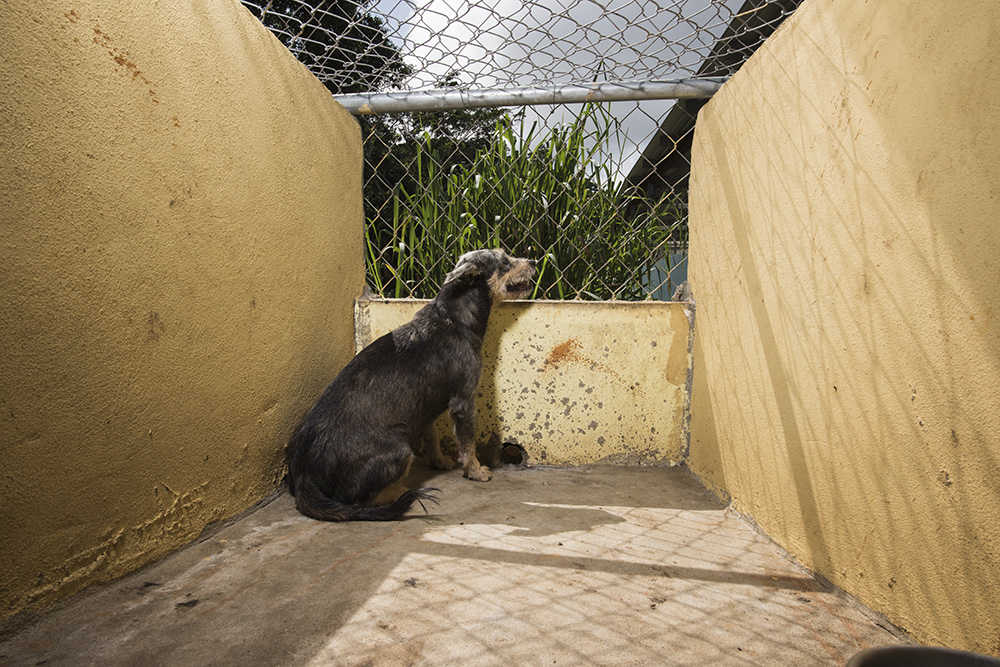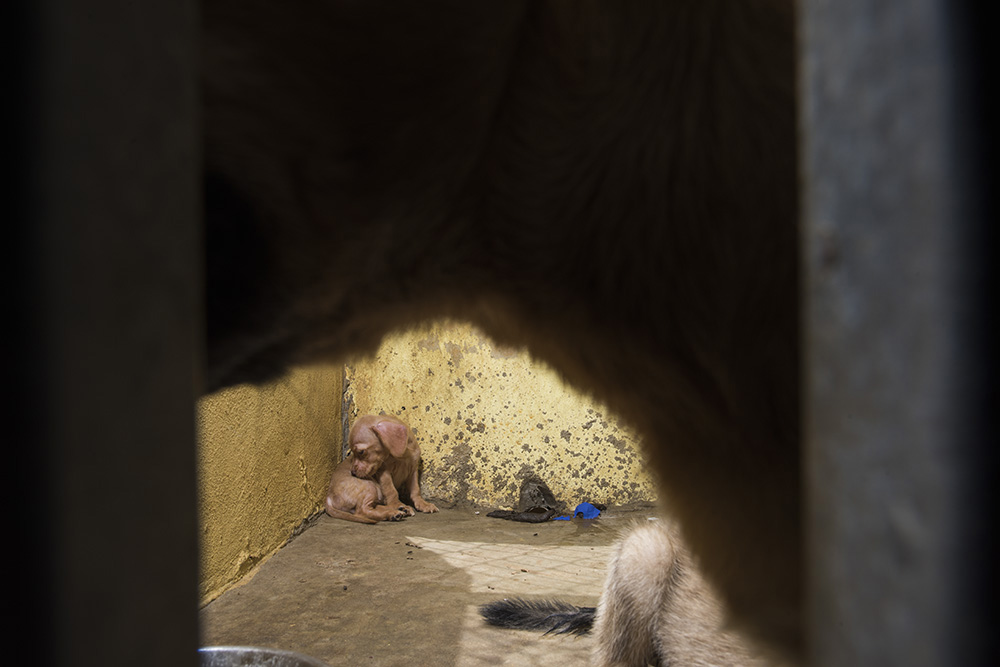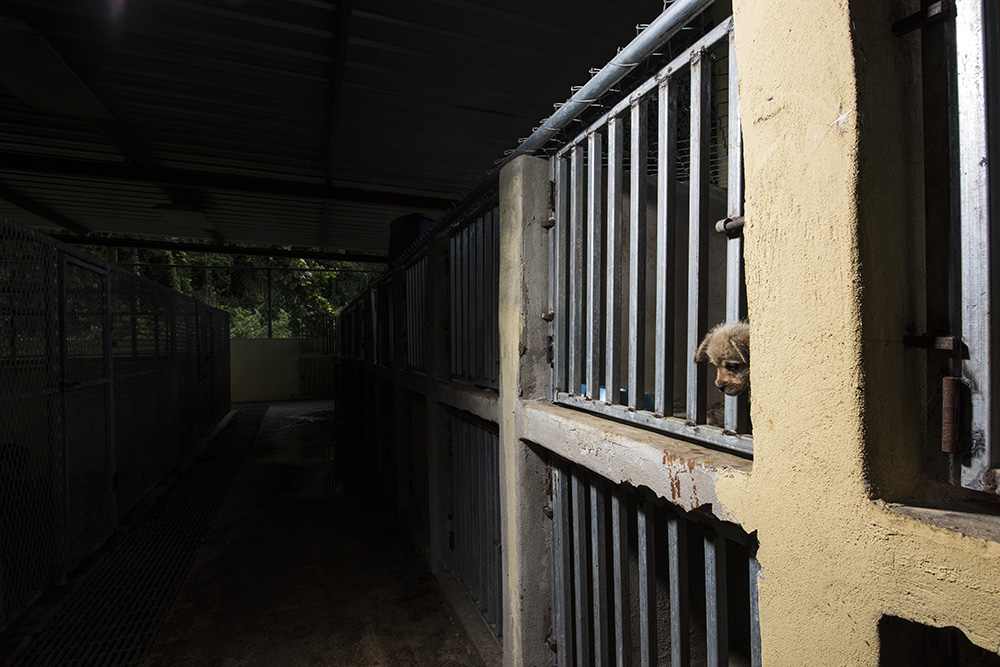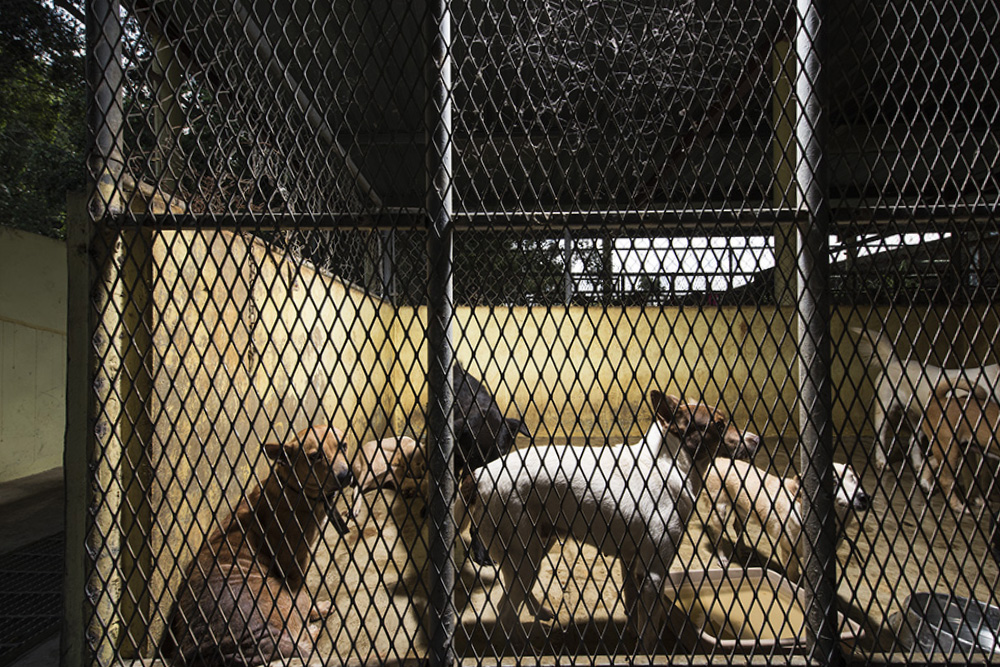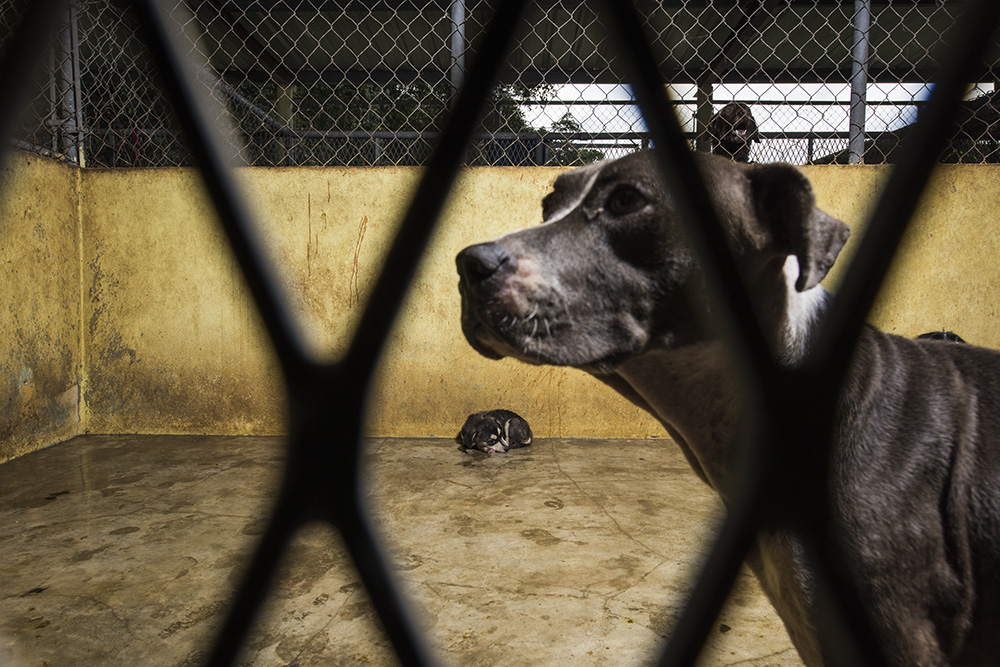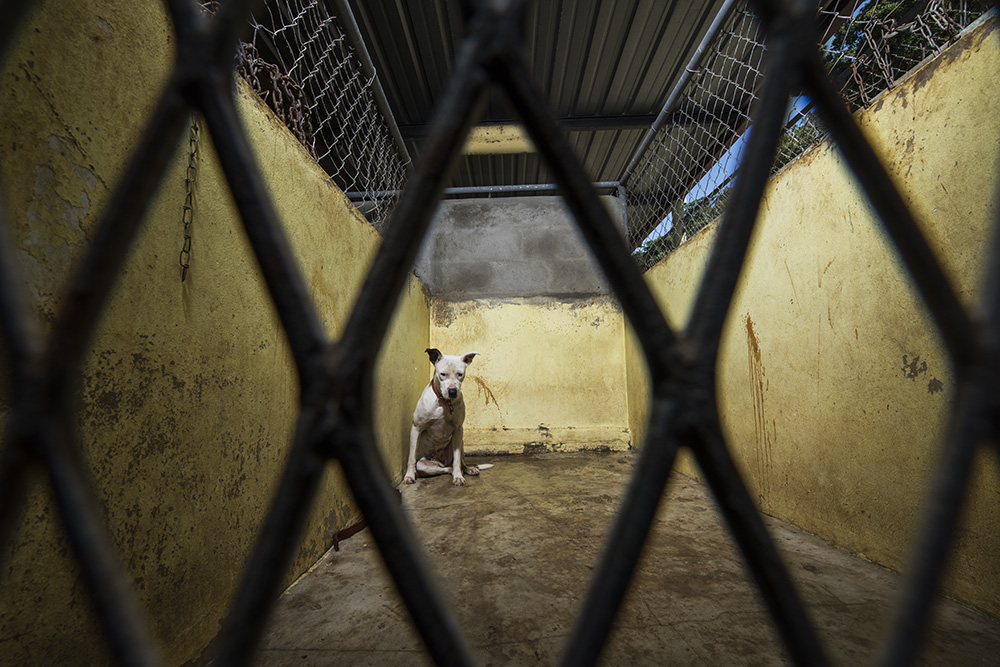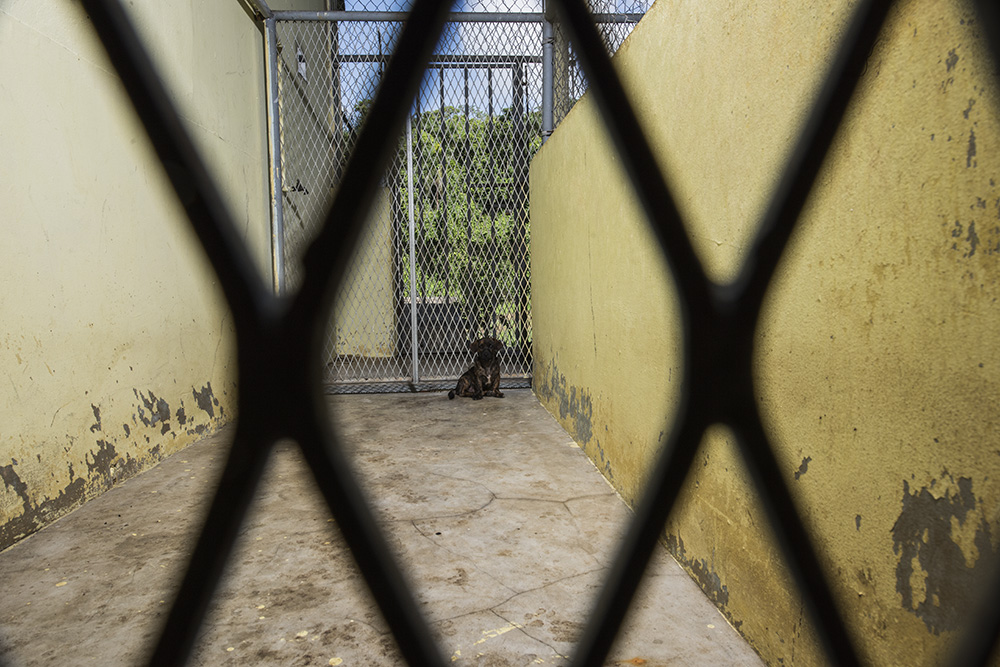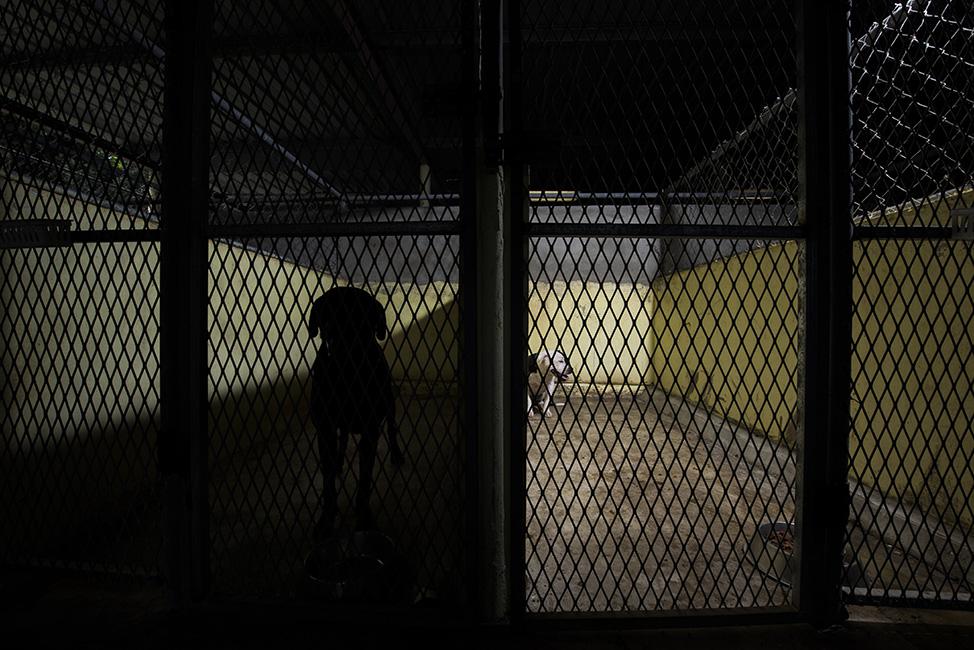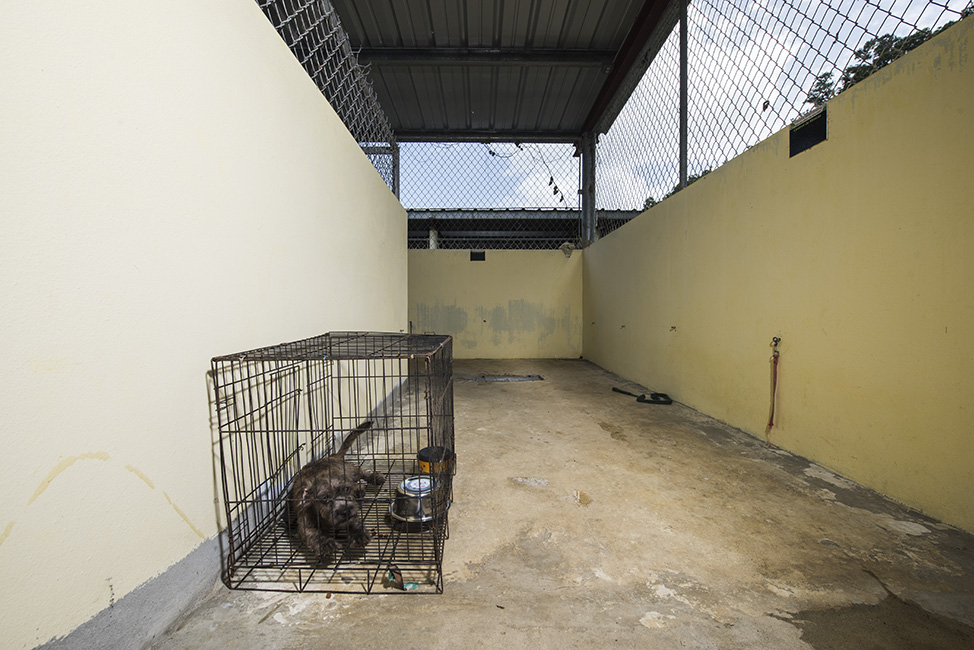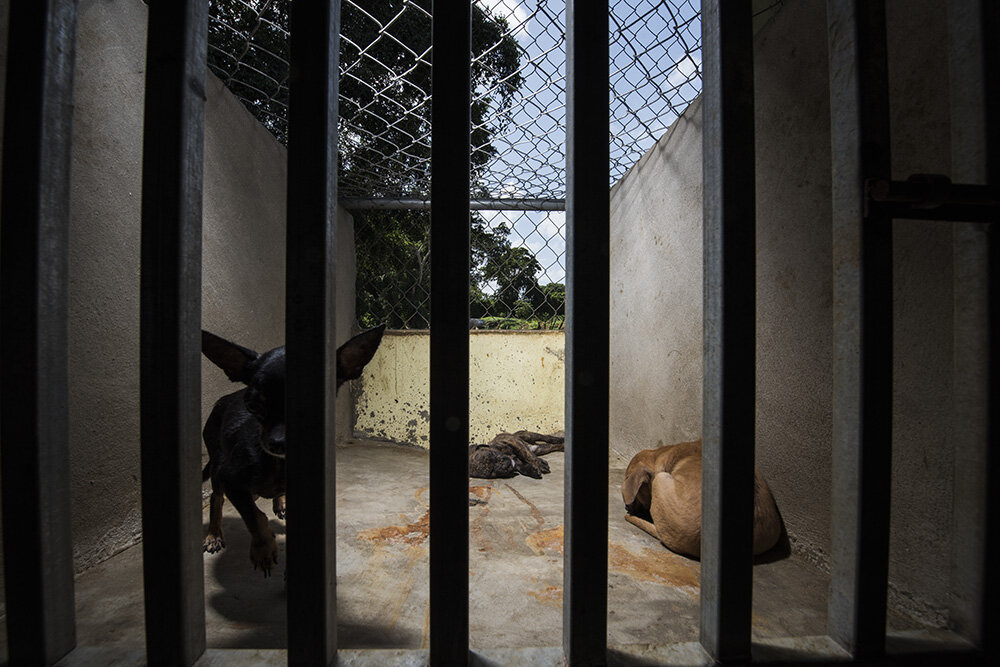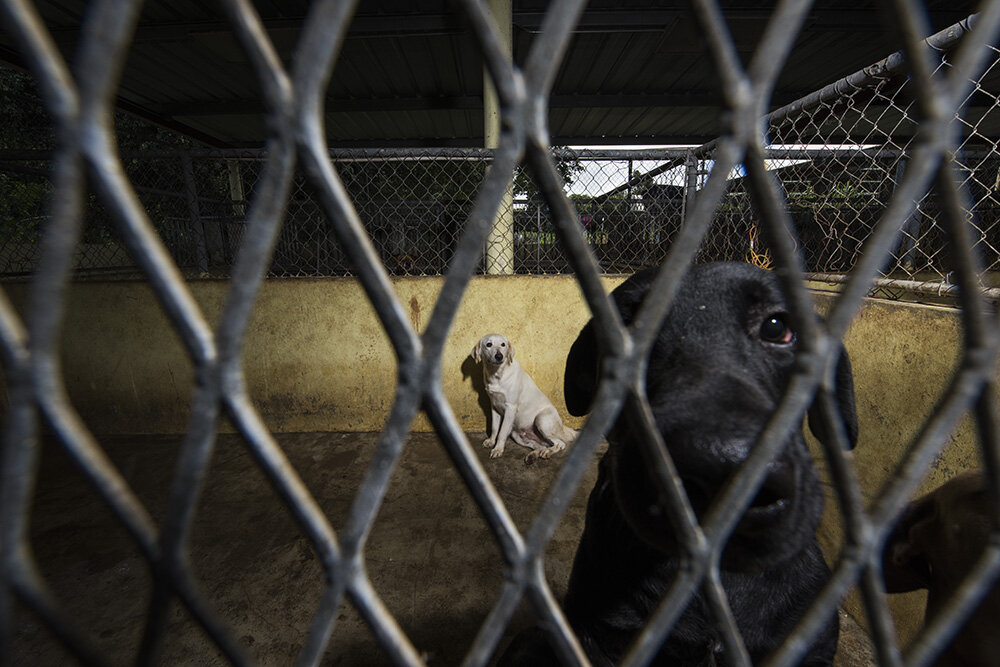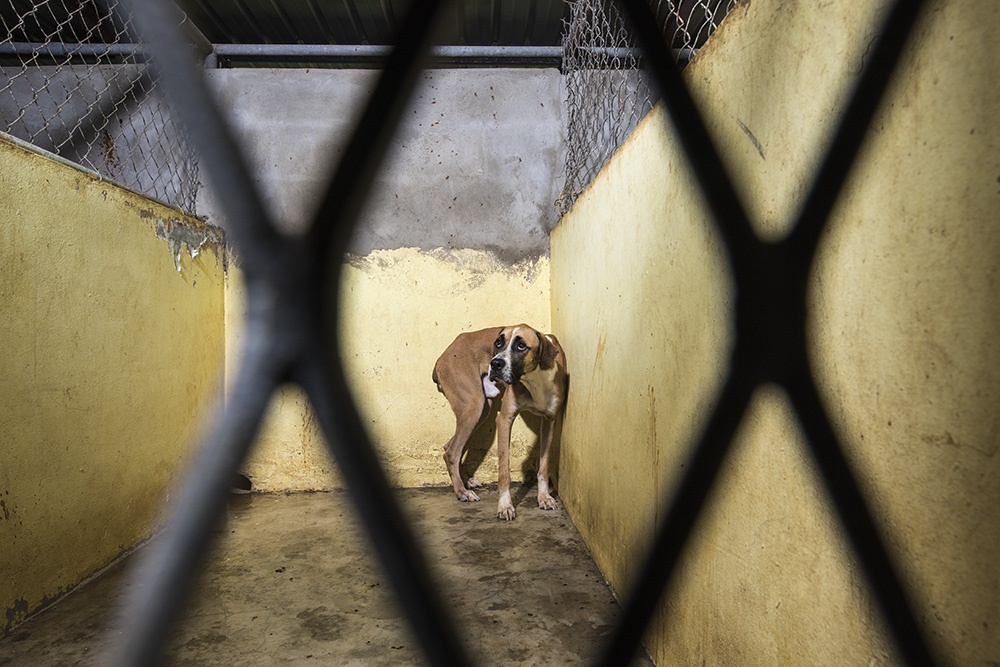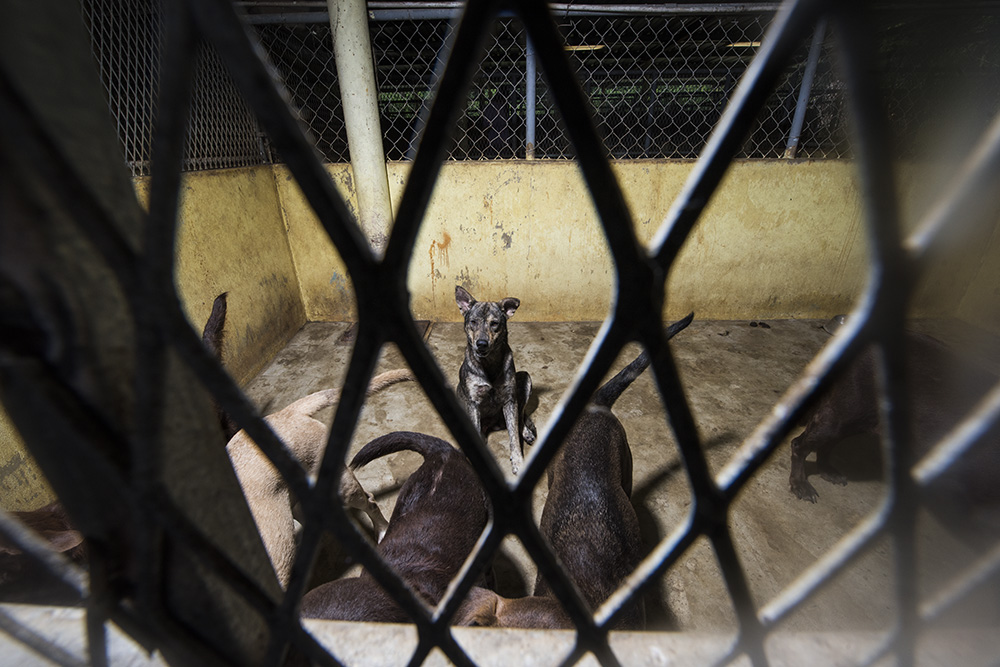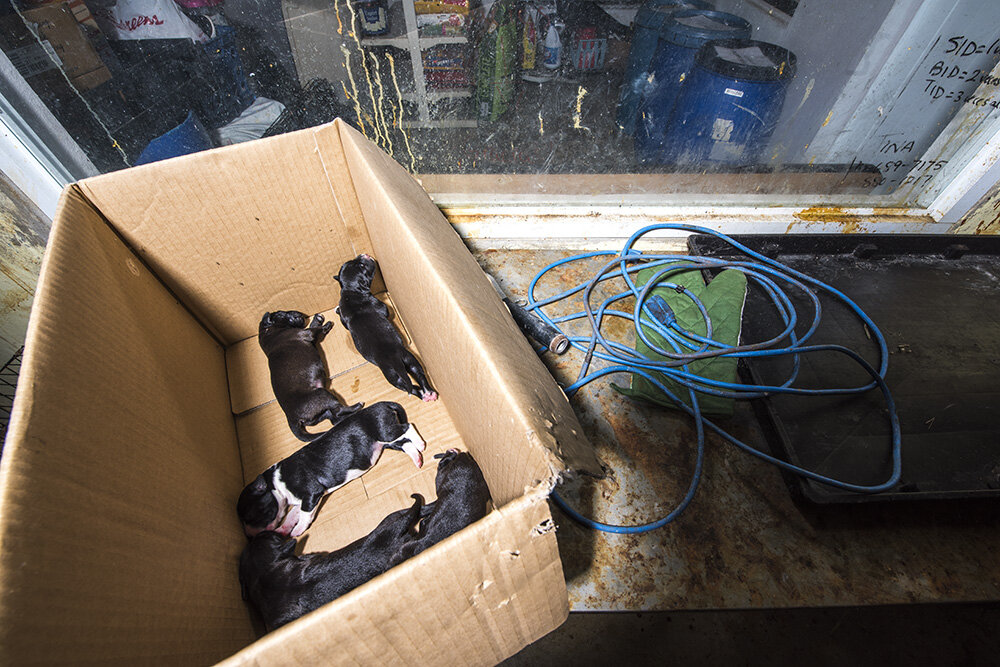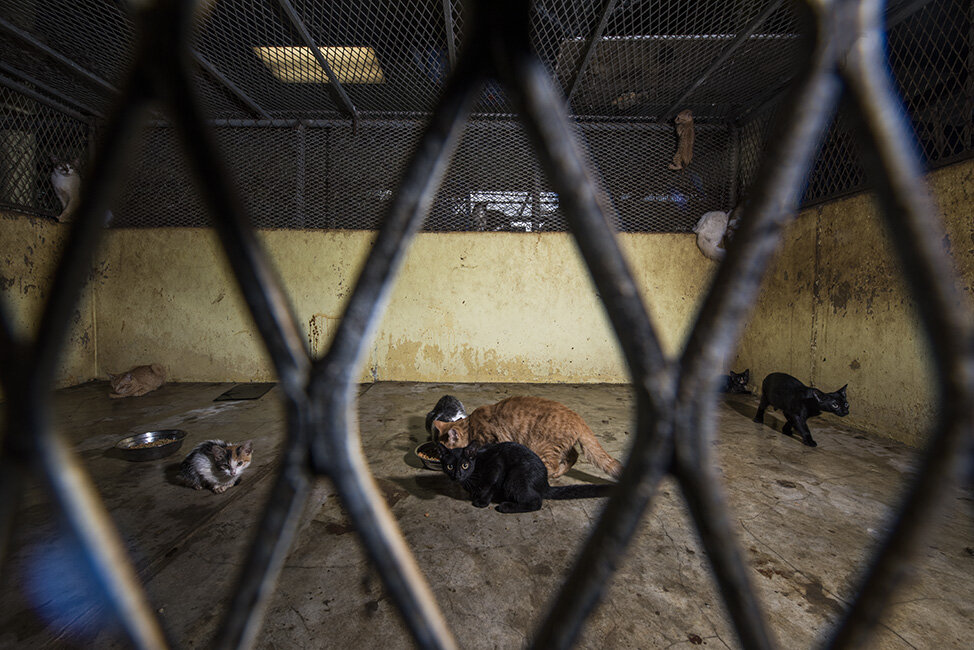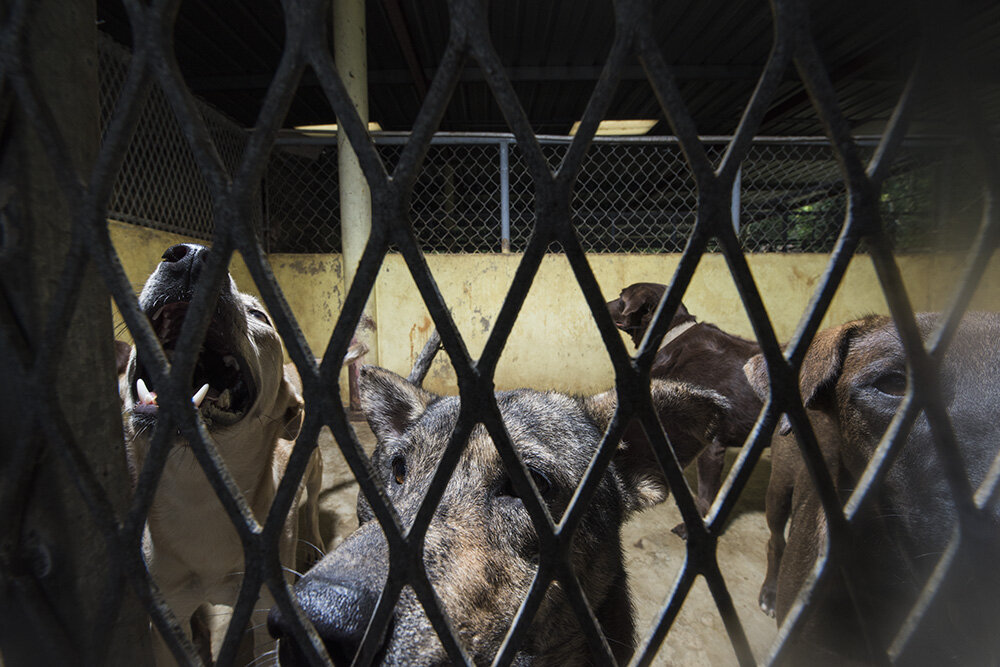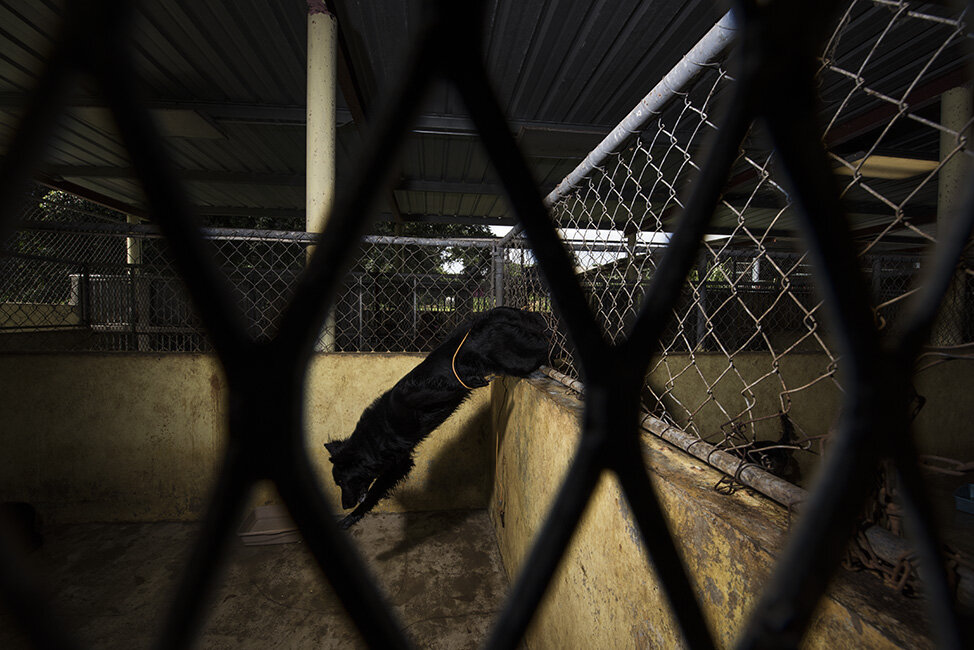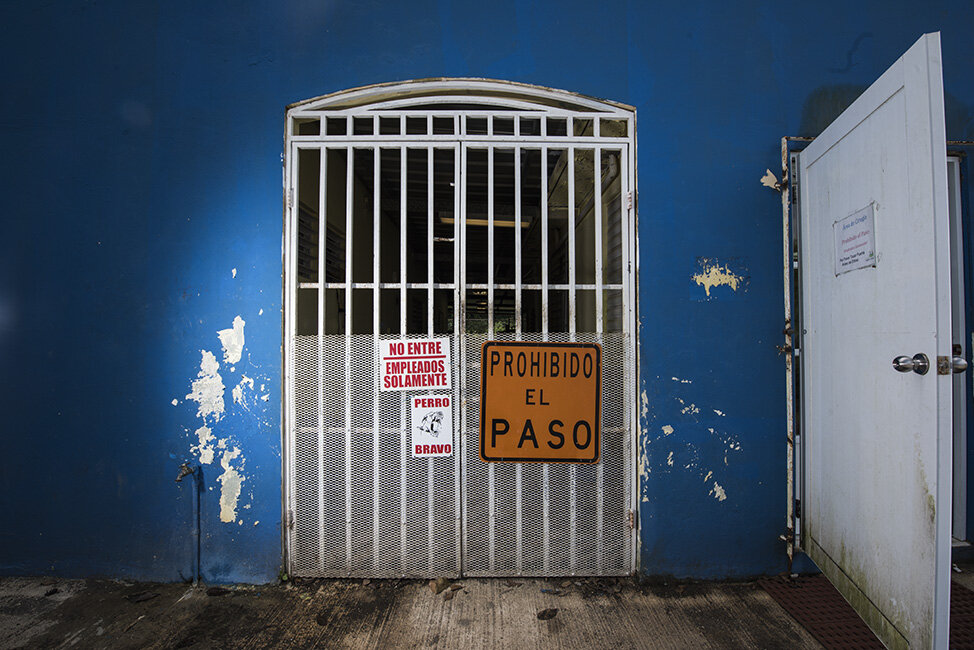the anatomy of discomfort (2016)
Animal shelters in impoverished communities often operate with no budget and face insurmountable challenges: high intake, high euthanasia rate, low adoption rate. How can dogs survive in this impossible construct, physically and mentally? Trapped, sometimes terrified, they desperately try to find comfort in these unnatural, scary, overwhelming environments.
These photographs were taken in a shelter in Puerto Rico, in the intake area where I was granted exceptional access. This shelter is mandated by the nearby city to take in all strays and surrenders, leading to a high intake rate every month. Dogs and cats are put in cages, awaiting their fate. Several deadly diseases like Distemper and Parvo are prevalent in this open space. The animals are over-heated, crowded, crawling with untreated parasites, and often die during quarantine. Some have to share a cage with another dead animal before the staff’s occasional clean up. Most other animals are euthanized, having little to no chance at being adopted. A very few make it to the adoption floor, where they can wait up to years for a second chance.
These animals’ state of limbo, should challenge a society concerned with animal welfare and compassionate care.
PS: I helped raise funds to improve the facility, secure the cages and create a quarantine area for puppies, but I am told not much has changed at this shelter. After Hurricane Maria, I offer to help more and was told by my contact that the animals were fine. Shortly after, an undercover video surfaced, showing horrific conditions at the shelter, severe neglect and cruelty. People in the Government promised to take action, but nothing came of it. This is an impossible equation for these towns, which deal with huge numbers of strays and have found no other humane solution for their animals. Still, I believe that care and dignity should always be at the heart of animal control.
On a positive note, in 2018, the Humane Society of the United States, working with local rescues, launched the Spayathon, a vast spay and neuter campaign to sterilize as many owned pets as possible. They had completed several rounds and sterilized over 56,000 pets before the COVID-19 Pandemic halted their efforts. Thousands of people were lining up for hours for each event, excited for their pets to finally receive the proper care they could not afford.

